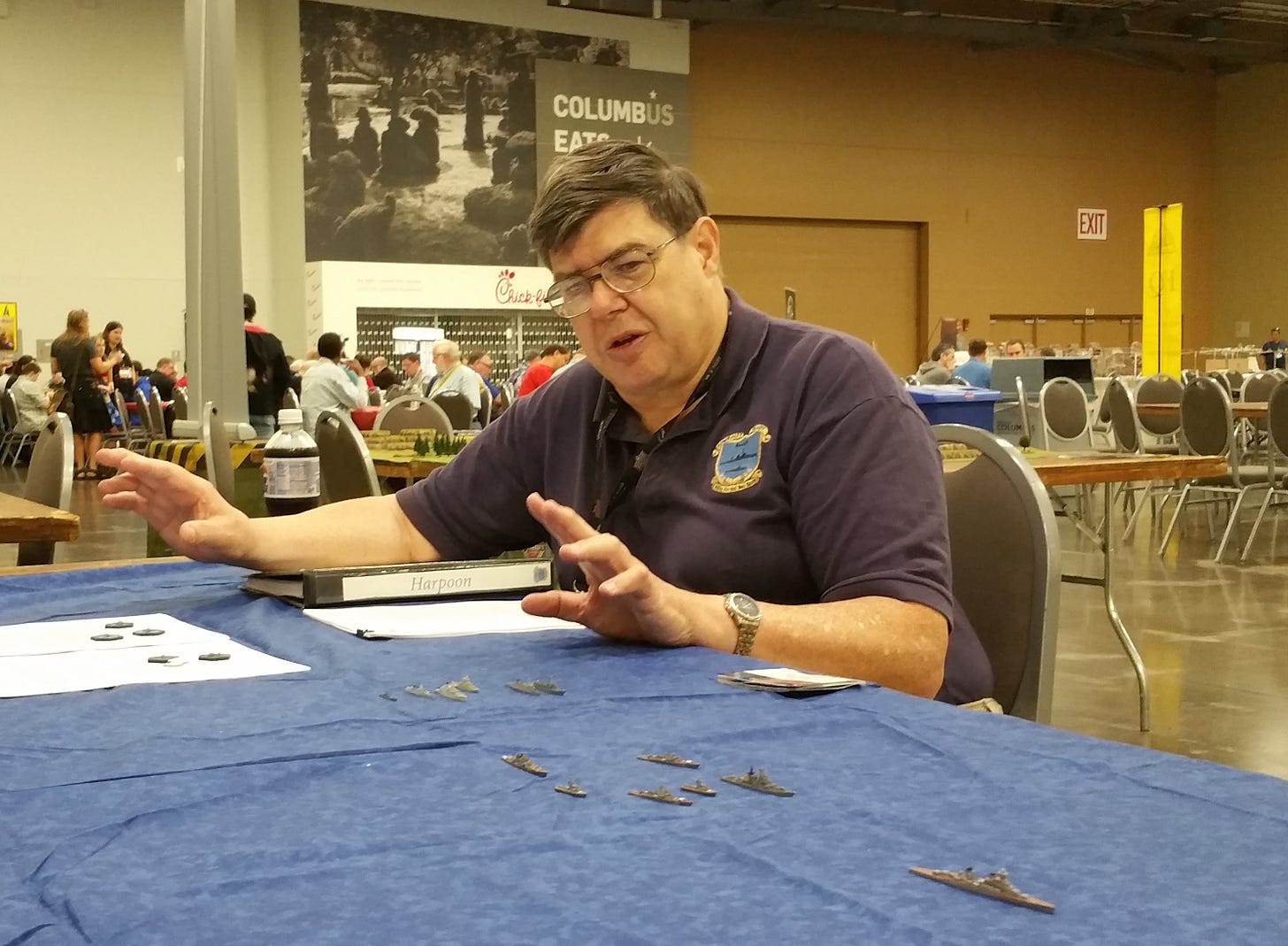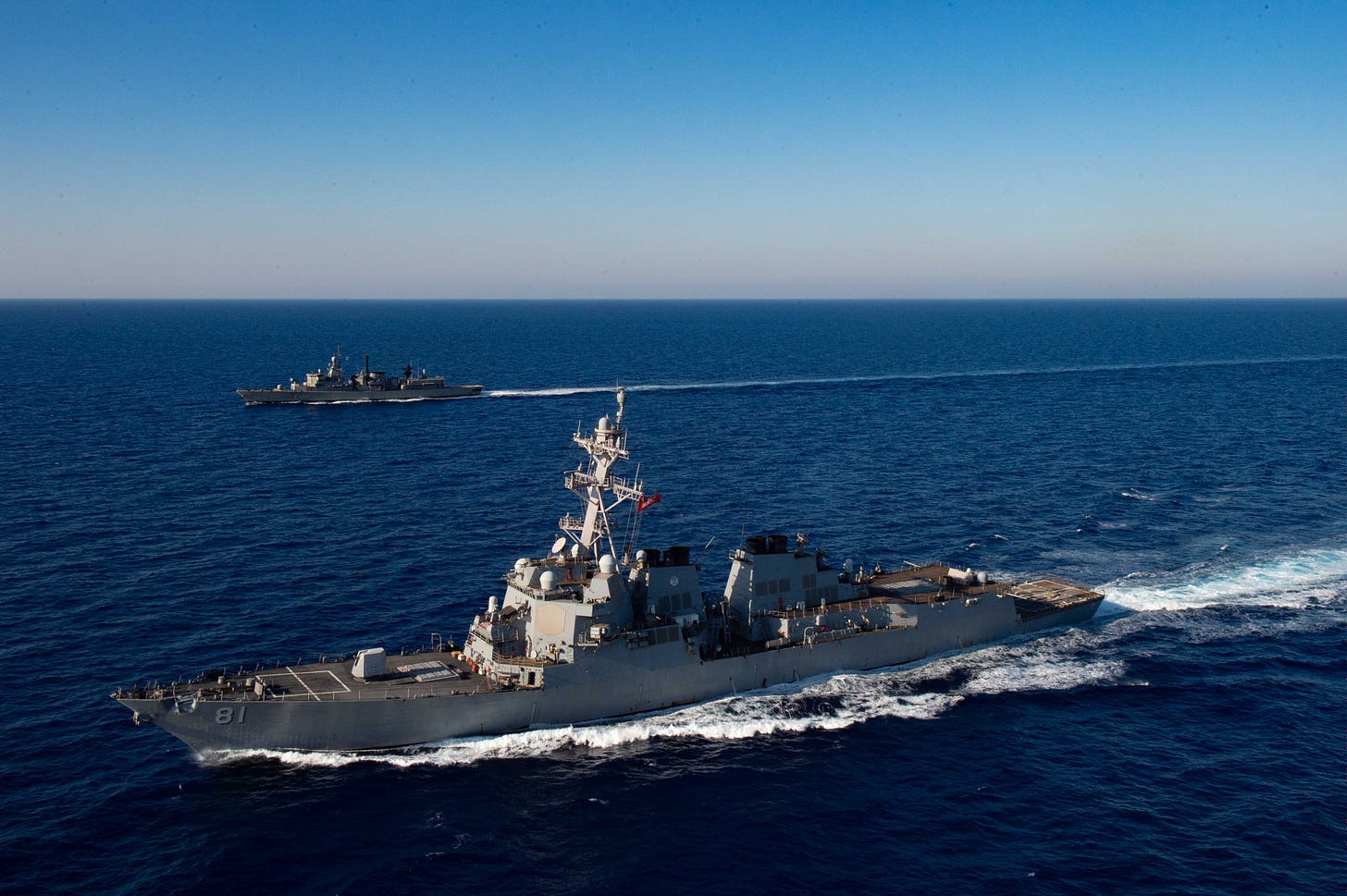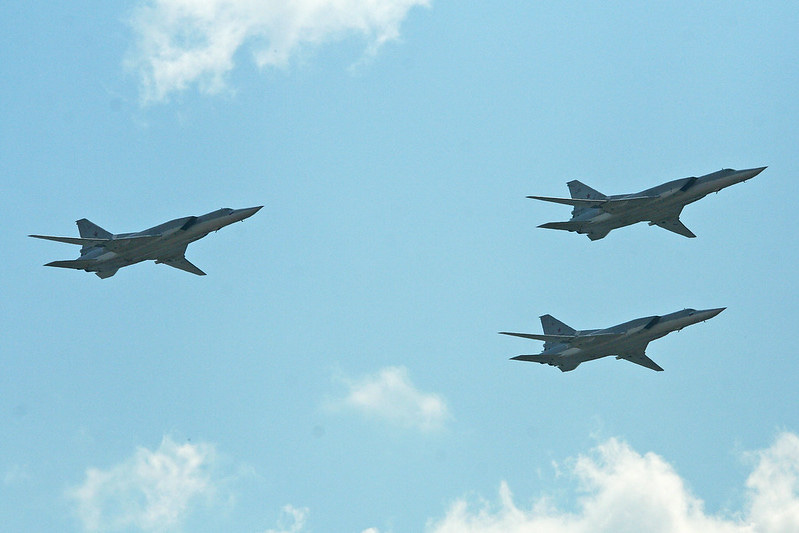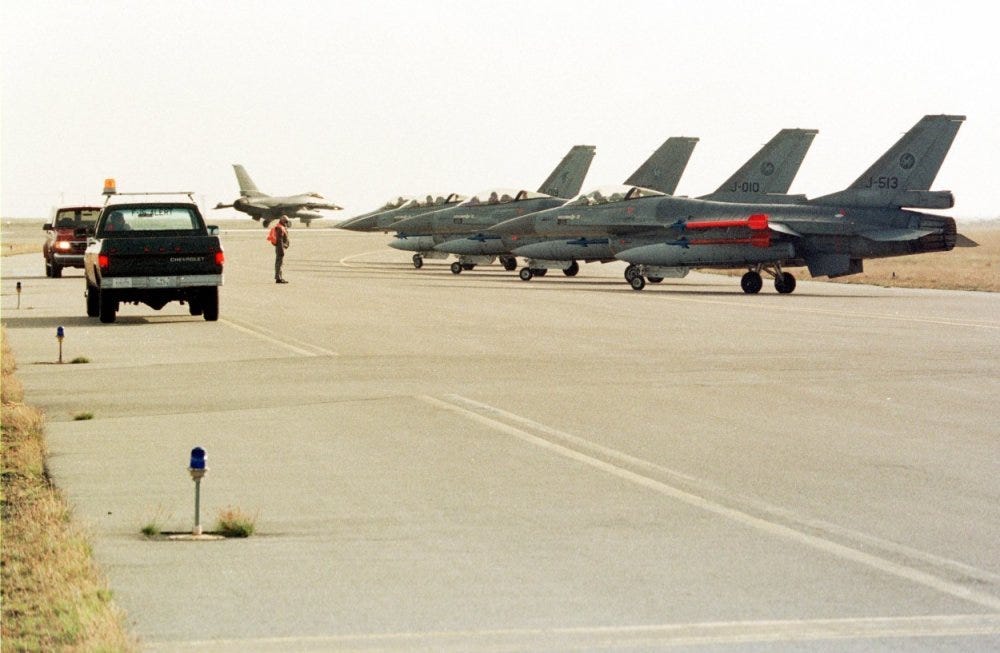Interview with Larry Bond and Chris Carlson about Harpoon pt. 1 of 3
Harpoon is arguably one of the most important wargames of the 20th Century
In 1989, the computer game Harpoon burst onto the scene, and became a touchpoint for many gamers and strategists. Harpoon showed how the then-new computer gaming industry could engage meaningfully with complex subjects, like war, but still make that engagement accessible and fun for the general population. Although many people first encountered Harpoon as a computer game, it was first—and remains—a tabletop game. Harpoon was successful because it tapped into the zeitgeist at the conclusion of the Cold War. Harpoon came out, and was wrapped up with, other popular media about naval competition like The Hunt for Red October book (1984) and film (1990). In the first part of this interview, we look back at Harpoon and the world into which it came forth.

Strategic Play:
Gentlemen, thanks so much for talking to me. I wanted to talk to you for sort of from a perspective of somebody who, honestly, “Harpoon” was one of my first entries into military strategy. My kids asked me the other day what my favorite war game growing up as a computer gamer was, and it was absolutely "Harpoon." You know, we used to get together as kids and I was fairly young when we first played on an old 286 Clone that we got <laugh>.
Chris Carlson:
And we keep hearing this a lot, <laugh>
Strategic Play:
And, well, you should, when I tell them I've talked with you, every single one of them said, “Oh my goodness. That's amazing!”
Chris Carlson:
I was referring to the age thing.
Strategic Play:
Oh yeah, there's that too. <Laugh>.
Larry Bond:
Yeah, <laugh>.
Larry Bond:
Yeah. I was up at the Naval War College a couple years ago and I was approached by a guy who was CO [commanding officer] of an Arleigh Burke destroyer. He told me the reason he joined the Navy was because he played “Harpoon” in Middle School.

Strategic Play:
Yep. <Laugh>
Chris Carlson:
<Laugh>. How do you take something like that?
Larry Bond:
You just take it and drive on.
Strategic Play:
Anyway, with people of my generation and—and presumably all the way through yours--there's always these stories that we tell ourselves about “Harpoon.” And while there's good research done from the perspective of scholarship, there's not a lot that's been written from the perspective of fans. I just wanted to ask you a few questions as we're starting out about some of these legends so you could confirm, deny, or add some perspective on them. So, “Harpoon” was mentioned, I believe, in the introduction of Red Storm Rising. I know that “Harpoon” and Red Storm Rising had something to do with each other. I also remember your books. Red Phoenix if I recall correctly, was the one about North Korea. And I can't remember of the one that was about South Africa…
Larry Bond:
Strategic Play:
Yes. Vortex. I read both of those. Loved them. And in fact when I eventually joined the Army, I thought back often on Vortex and the role that smaller personnel carriers and how they might be used like tanks, and how we were functionally doing that in the US military in lower intensity environments. Unfortunately, my copy of Vortex and everything has all fallen apart because they were all paperbacks <laugh>. So I don’t have them anymore.
Larry Bond:
They did not use acid free paper with that. <laugh>
Strategic Play:
Yeah. Had I known I would've bought a nice hardback copy that would've lasted me much longer.
How close was the association with “Harpoon” or the games and these books?
Larry Bond:
Well, okay, let's start with The Hunt for Red October. Tom [Clancy] was working as an insurance agent in rural Maryland and had no direct contact with anybody in the Navy. But he was listening to the sea stories that the retired nuclear submarine officers were telling him, because they were running the Calvert Cliffs nuclear power plant. So, he was getting lots of good dope about life on a submarine. And Tom, being the master storyteller that he was, was hearing not only the content, but he was looking at how they talked; how they acted; their attitudes, their mindsets.
When he researched the story, he bought a lot of stuff, but he tripped over Harpoon, possibly because we [Adventure Games] ran an ad in the Naval Institute Proceedings – just that once, because they're horribly expensive.
But he bought the game and used it as one of his many data sources. And you can confirm that by looking at one of the chapters where the Alfa's in that dog fight with Red October and, and what's the US sub? [Chris: Pogy] Pogy. And the Alfa fires a “Type C torpedo.”
Tom, being the genius that he was, said “That would make a good book.”
There was never a Russian torpedo named “Type C,” but when I was writing the first edition of Harpoon, I knew that they had at least three different varieties of torpedoes. There was little information available on their characteristics, and none on their actual names. So, I just labeled them “Type A,” a straight runner, their acoustic homer “Type B,” then “Type C” for their latest, a wire-guided weapon. That was the best thing that they had, so the Alfa fired one of those, and Tom gave me a very nice gong in the front of the book.
My direct participation was just reading the manuscript. I made a couple of comments. He asked me about naval terminology. Is it "hard right rudder" or "right hard rudder?" Things like that. But that was the start of our association.
We became good friends, and I’m godfather to one of his kids. At that time, I was working on a campaign game called “Convoy,” which was going to look at the Reforger convoys carrying troops to Europe in wartime. I was blathering on to him about it because you're looking at the entire Atlantic Ocean as a basin for some sensors. You've got convoys with anywhere from 40 to 100 ships being struck by multiple regiments of Backfires, and it was all on a fairly grand scale.

Tom, being the genius that he was, said “That would make a good book.” And then he asked, “Do you want to work on it with me?”
I said, "Let me think about it. Yes!" <Laugh> No I'm giving myself too much praise there, because I actually did think about it for a minute before saying “Yes.” But I did make the right decision, and then we worked on it together.
We heavily gamed out one of the big chapters, "Dance of the Vampires." And one of the legends, which I'll try to put down forever, is that we simply gamed it out and then wrote that in the book. And that is not what happened. We were using wargames to study the possibilities.
And this, is a great place to talk about this. This particular technique uses wargames to see what could happen. How does the battle flow? We ended up playing the same scenario three times with different levels of success and completely different results, none of which were used in the book because Tom had his own genius ideas, but he got a better understanding of how things would interact. And that’s how the chapter was written.
Chris Carlson:
Those are out, the after-action reports, you know. Larry and I had copies and he put them together and you can get “Dance of the Vampires.” It’s the three after action reports all merged together. Did you add “The Keflavik Turkey Shoot” to the front of that?
…the skills that I acquired playing “Harpoon” were useful when we were doing the military side of things.
Larry Bond:
I added it at the end. And unfortunately, the map for the "The Keflavik Turkey Shoot was corrupted, so the writeup is incomplete. Okay. There’s another legend there about Tom wanted. He looked at the map of the GIUK and said, "the Russians have to take Iceland to kick open the door to the Atlantic."
And me being the conventional, very doctrinaire Navy guy that I was, says, "No, no, no, they won't do that. They don't have the lift, they don't have the resources. It’s not in their strategy. They’re very much in the “We’re defending the Norwegian Sea” mode. “We're defending the Kara Sea even more, but we don't want to project power into the Atlantic. That's not what we do."
And Tom said, "No, no, no, they're going to do this." He was the senior partner and he was a lot smarter than I was.
So I was going to prove my point to him by gaming the scenario. Let's have a Backfire strike come down through the GIUK gap, headed for some convoy in the Atlantic. Keflavik had two squadrons of F-15s. One was standard in peacetime. They would be reinforced with a second squadron in wartime. I also had the UK air defenses up and running at wartime strength. And the Russian player was allowed to use jamming. He was allowed to maneuver as necessary for deception, okay? “We’re gonna penetrate this.” This is the first wave coming through on Day One of the war.
And it was a disaster for the Russians. They lost a tremendous number of their aircraft, to the point where even that one raid would've been a disaster. Excursions and variations continued to show unacceptable losses. And the Russians would have to do this more than once. On the second and third attempt, the losses would only be worse.

So that convinced us, me specifically, that Iceland needed to be seized and or at least neutralized. And so then Tom found the Julius Fucik, the container ship that could serve as a covert amphibious vessel. He was good at research. He dug. He found stuff, and put the pieces together. So there was an amphibious assault using a civilian ship at the start of the war. That was Operation Polar Glory.
I did the staff work on that one, figuring out what they could carry. What would be there? Would it be enough? How do they reinforce, etc., etc.
So yeah, the skills that I acquired playing “Harpoon” were useful when we were doing the military side of things. That's an awful long answer. But that's what happened with Red Storm Rising.
Chris Carlson:
I think the best analogy is to think of it as Tom had a storyline and the wargames provided seasoning to improve the flavor.
Strategic Play:
That's, that is very interesting. Because in my own experience with gaming as a training material or as educational material, that's what fits. People come in. Maybe they've read books where they have an understanding or they're often students are military personnel. They have experience. They know how they think things are going to go. And games can cause them to think things a lot more detailed than maybe they would've otherwise done. Or can sometimes—as it was in the case of fans like me and, and my friends—it can be our introduction to the levels of complexity of things.
Larry Bond:
Well, the value of “Harpoon” was shown to me almost immediately when we were running wargames for training aboard my ship. Now I wasn't using “Harpoon” at this point. I was using an official Navy miniatures game called NAVTAG.
But simply taking the training that the officers had and applying it in even a simulated situation, they were making these—I don't wanna call them bonehead mistakes—but they're making very obvious mistakes. Trying to fire missiles from an aft-facing launcher at a target dead ahead. No, no, no. That's not going to work. You have to unmask your batteries. Misidentifying ships. Not coordinating fire properly.
It’s that first exposure, like the mantra about Top Gun. The first missions are where you're going to make your mistakes and get killed, so let's get those missions out of the way ahead of time. It's the same thing.
Wargaming in the military or in the professional community is always linked to an individual or an advocate who has the skills and knows how to run the games and does it.
Strategic Play:
So you mentioned that you used “Harpoon” in training in the ship that you were on. What other ways has “Harpoon” been used? Either the non-computer game or the computer game in, in the military that you're aware of?
Larry Bond:
Anecdotal information? Very much.
Yeah. I've talked to any number of service members who have used it on board their own ship or at their command, unofficially. There was a movement to get it used at the Naval Academy many, many moons ago.
But it was never adopted officially because, as we've discussed, if the Navy adopts something officially, it has to go through the validation process, yada, yada, yada. And you do not want to go there.
So it's always been on an individual unit basis. I actually gave the keynote speech about this at Connections a few years ago. Wargaming in the military or in the professional community is always linked to an individual or an advocate who has the skills and knows how to run the games and does it.
And everybody else goes, “Oh, this is great.” But when that individual leaves, the effort dies, because there's no continuity.
And that again goes back to what Matt Caffery was saying. If you make it a requirement for an officer's promotion to know how to run a game, then there's somebody else who could pick that up and keep it going. But without that wargaming skillset, knowing the nomenclature and techniques and just what games were available and even what wargaming is itself. I mean, there are a lot of guys who have no concept what a “wargame” is.
I visited the Marine Corps Intelligence School at Quantico, and they wanted me to run a game ATG publishes called "Persian Incursion," which is “Israel vs. Iran.” And I gave a brief, and then we ran some games, and these guys were totally clueless.
I had to explain what a combat results table was, and how a game worked. Their particular skills did not include Air Warfare targeting, so I had to give them a quick brief on that as well.
And then they got engaged when they found out if they rolled the dice right, they blew stuff up. <Laugh>, These were Marines, okay? Once they could blow stuff up, they really got into it. <laugh> But that whole idea this, if you get 'em engaged, and then they’re using the game and learning. You have to talk about the fun factor.
Once you get the pieces out on the board and start moving them around, you can look at how they’re working together. You game out your proposed Op-plan.
Chris Carlson:
Going back to "Persian Incursion,” the Army Staff College actually used it to teach the concept of strike planning. They used that part. They didn't resolve it, I don't think. I just think they did the strike planning discussion. So the game was used there.
There was, God, there was someone down in Norfolk, and I'm trying to remember his name. It's really bothering me. They were looking at it from the aspect of refueling. They were trying to show things like, you know, airplanes don't have unlimited range. So often times you're constrained in your ability to do things by how many airborne tankers you have. And they really like the process that we had folded in. And so they were kind of using game for that purpose.
So as Larry said, it's a lot of individuals who see the value of gaming, bringing it into their professional work, but it's not something that is endorsed, if you will, by large scale services.
We've never, we've never had anybody from any of the services or any official organization come and say, "Hey, you know, we'd like to use this tool." Well, we actually, we did have that defense contractor who wanted to use our damage system. That was oodles and oodles of years ago.
Larry Bond:
That was many, many, many moons ago. But we are constantly promoting the use of “Harpoon” for training and for planning, which is not necessarily an intuitive thing.
Once you get the pieces out on the board and start moving them around, you can look at how they’re working together. You game out your proposed Op-plan. If you've got some big complex exercise coming up, you can game it out ahead of time and go, “Yeah, this is probably not going to work quite the way we want it to. We should adjust it accordingly.”
And then the third use is for analysis, which we recommend with a heck of a lot of caveats for obvious reasons.
Chris Carlson:
Basically, using it for investigation.
Larry Bond:
Investigation's a better word.
Chris Carlson:
Because to do analysis, you have to have a game analysis cycle.
Larry Bond:
Yeah. Similar to a Monte Carlo analysis.
Chris Carlson:
And most groups can't afford that kind of time, so you play a game to see what the big things are. What are the things that pop out that really impacted that particular game? And it may have been an artificial outcome, or it's something that's typical and it causes you to think about that particular issue a lot more thoroughly.
Larry Bond:
Yeah. One play of a game will not tell you anything. Two or three or four, you're going to see what drives the situation. What are the major factors? Maybe reconnaissance doesn't matter because he’s easy to find. Maybe maneuver is more important. It varies by scenario.



